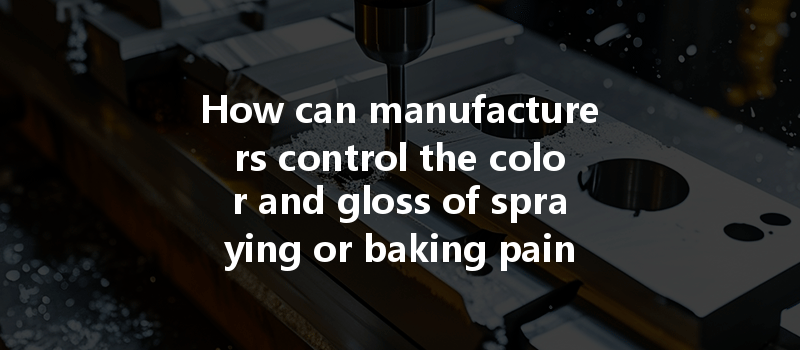Did you know that approximately 90% of the first impression of a product is based on its color? This staggering statistic reveals the critical role that color plays in consumer decision-making. In a world where visual appeal can dictate sales success, manufacturers face immense pressure to deliver high-quality paint finishes that not only meet aesthetic demands but also withstand the rigors of use. But how can manufacturers effectively control the color and gloss of spraying or baking paint to achieve the desired results?
In this comprehensive blog post, we will explore the science behind paint application, the factors influencing color and gloss, and practical strategies manufacturers can adopt to ensure consistent and high-quality finishes.
Understanding the Basics: What Is Color and Gloss?
Before diving into the methods for controlling color and gloss, it’s important to establish what these terms mean and why they matter.
Color
Color is a characteristic of visual perception described through color categories, such as red, blue, green, etc. The perception of color is influenced by several factors, including hue (the type of color), saturation (the intensity of the color), and brightness (the lightness or darkness of the color).
Gloss
Gloss refers to the shiny or reflective quality of a surface. It is determined by how much light is reflected from the surface; surfaces with high gloss reflect more light and appear shinier than those with low gloss. The gloss level can be categorically defined as high, semi-gloss, satin, or matte.
Factors Influencing Color and Gloss in Paint Application
Understanding the factors influencing color and gloss is crucial before implementing control measures. Here are some of the most significant aspects:
Solutions for Controlling Color and Gloss
Now that we understand the basics and influential factors, let’s delve into practical solutions manufacturers can use to control the color and gloss of spraying or baking paint effectively:
Investing in high-quality paints, primers, and coatings is the first step. Quality products often come with better pigmentation, leading to improved color fidelity and gloss characteristics. Consider using premium brands that offer consistent results and have proven track records.
Effective surface preparation is paramount in achieving the desired finish. This includes:
Proper application techniques can drastically affect the finish. Here are several key practices:

Maintaining a controlled environment is crucial for consistent paint quality. Consider these environmental factors:
Manufacturers can manipulate the paint formulations to achieve desired color and gloss levels:
Different paint systems (for instance, polyurethane vs. epoxies) can result in varied gloss and color outcomes. Testing several systems on small samples can help you determine the best fit for your products.
To achieve a specific gloss level:
Quality Assurance and Testing
Implementing quality control measures is key to ensuring your finished products meet color and gloss standards. Here’s how:
Controlling the color and gloss of spraying or baking paint is not merely an art, but a science that can significantly impact the market success of a product. By understanding the essential factors influencing these attributes and employing the techniques outlined above, manufacturers can achieve the consistency and quality required in today’s competitive environment.
From selecting high-quality materials and optimizing application techniques to managing environmental conditions and implementing strict quality control measures, every detail plays a role in how a painted surface ultimately appears. As you consider these strategies, remember that attention to detail can make a critical difference between a successful product and one that falls flat in the eyes of consumers.
This blog serves as a resource that all manufacturers should keep in mind, not just as a checklist but as a foundational overview of best practices in paint application. As you implement these techniques, you’ll be better positioned to meet customer expectations and elevate your product’s aesthetic appeal.






